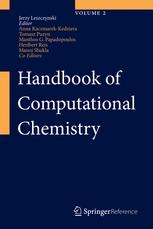

Most ebook files are in PDF format, so you can easily read them using various software such as Foxit Reader or directly on the Google Chrome browser.
Some ebook files are released by publishers in other formats such as .awz, .mobi, .epub, .fb2, etc. You may need to install specific software to read these formats on mobile/PC, such as Calibre.
Please read the tutorial at this link: https://ebookbell.com/faq
We offer FREE conversion to the popular formats you request; however, this may take some time. Therefore, right after payment, please email us, and we will try to provide the service as quickly as possible.
For some exceptional file formats or broken links (if any), please refrain from opening any disputes. Instead, email us first, and we will try to assist within a maximum of 6 hours.
EbookBell Team

4.1
10 reviewsThe first part briefly describes different methods used in computational chemistry without going into exhaustive details of theory. Basic assumptions common to the majority of computational methods based on either quantum or statistical mechanics are outlined. Particular attention is paid to the limits of their applicability. The second part consists of a series of sections exemplifying the various, most important applications of computational chemistry. Molecular structures, modeling of various properties of molecules and chemical reactions are discussed. Both ground and excited state properties are covered in the gas phase as well as in solutions. Solid state materials and nanomaterials are described in part three. Amongst the topics covered are clusters, periodic structures, and nano-systems. Special emphasis is placed on the environmental effects of nanostructures. Part four is devoted to an important class of materials – biomolecules. It focuses on interesting models for biological systems that are studied by computational chemists. RNA, DNA, and proteins are discussed in detail. Examples are given for calculations of their properties and interactions. The role of solvents in biologically significant reactions is revealed, as well as the relationship between molecular structure and function of various classes of biomolecules. Part five features new bonus material devoted to Chemoinformatics. This area is vital for many applications of computational methods. The section includes a discussion of basic ideas such as molecular structure, molecular descriptors and chemical similarity. Additionally, QSAR techniques and screening methods are covered. Also, available open source chemoinformatics software is presented and discussed.